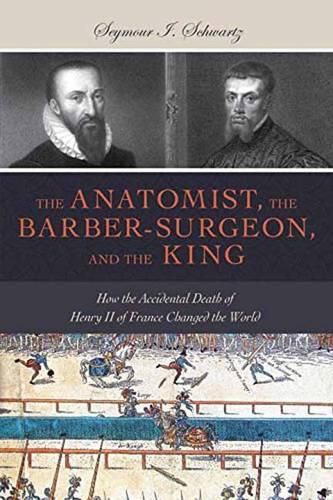Readings Newsletter
Become a Readings Member to make your shopping experience even easier.
Sign in or sign up for free!
You’re not far away from qualifying for FREE standard shipping within Australia
You’ve qualified for FREE standard shipping within Australia
The cart is loading…






This unique study examines a critical juncture in the history of the Renaissance brought about by a freak accident. Combining both a history of sixteenth-century medicine and European politics, the author describes the far-reaching effects of the death of King Henry II of France (1519-1559). Grievously wounded by an accidental blow to the head suffered during a mock jousting competition, the king lingered for weeks before expiring. Even the ministrations of Europe’s two most renowned physicians-Andreas Vesalius and Ambroise ParU-could not prevent his demise. As the author shows, the death of Henry II created a power vacuum, and the subsequent chain of events had significant effects on the balance of power in Europe.a
A noted surgeon, the author also provides many insights into the state of medicine in this era-a time when the practice of surgery and knowledge of human anatomy were being transformed. Readers learn how Vesalius’s ingenious studies of anatomy advanced the understanding of human body functions. And ParU’s experience with battlefield wounds led to more humane and effective treatments of the injured.a
This colorful, lively narrative combines engrossing details about politics, history, and medicine during an important period at the end of the Renaissance.
$9.00 standard shipping within Australia
FREE standard shipping within Australia for orders over $100.00
Express & International shipping calculated at checkout
This unique study examines a critical juncture in the history of the Renaissance brought about by a freak accident. Combining both a history of sixteenth-century medicine and European politics, the author describes the far-reaching effects of the death of King Henry II of France (1519-1559). Grievously wounded by an accidental blow to the head suffered during a mock jousting competition, the king lingered for weeks before expiring. Even the ministrations of Europe’s two most renowned physicians-Andreas Vesalius and Ambroise ParU-could not prevent his demise. As the author shows, the death of Henry II created a power vacuum, and the subsequent chain of events had significant effects on the balance of power in Europe.a
A noted surgeon, the author also provides many insights into the state of medicine in this era-a time when the practice of surgery and knowledge of human anatomy were being transformed. Readers learn how Vesalius’s ingenious studies of anatomy advanced the understanding of human body functions. And ParU’s experience with battlefield wounds led to more humane and effective treatments of the injured.a
This colorful, lively narrative combines engrossing details about politics, history, and medicine during an important period at the end of the Renaissance.